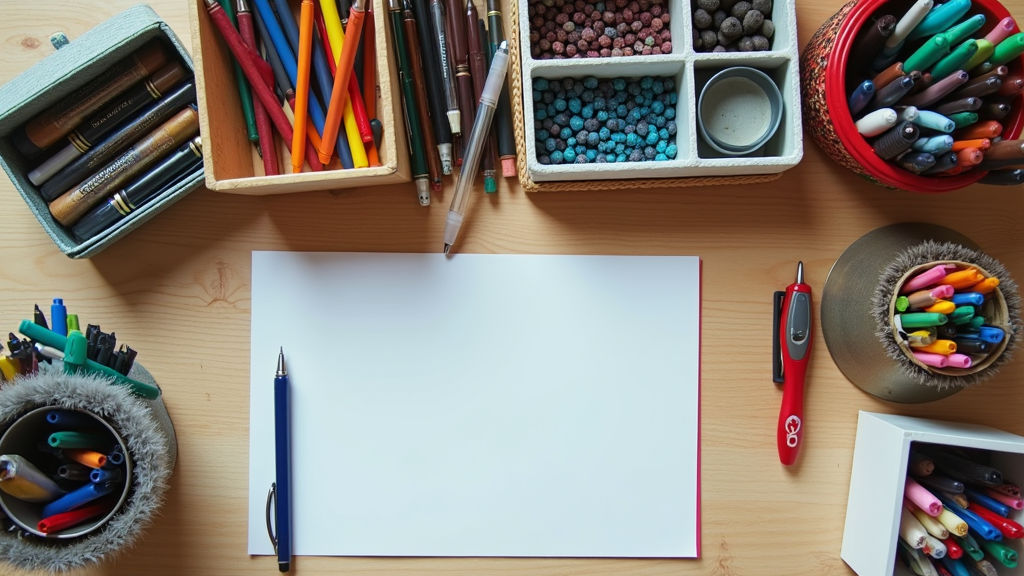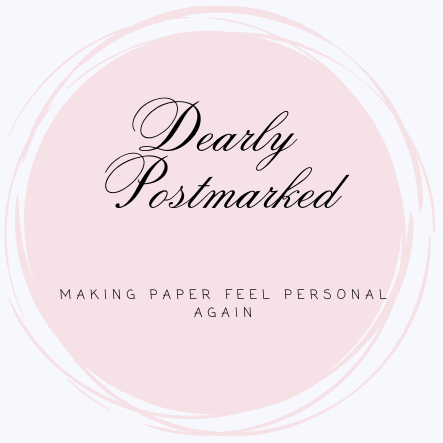Staying organized with your writing supplies can really smooth the creative process and make things a lot less stressful. Whether you’re a student, a novelist, or just someone who loves journaling, keeping your space neat and your tools easy to find makes a big difference. Over the years, I’ve picked up a stash of handy tips on how to cut down on clutter and keep everything close at hand. So, I’ll walk you through my favorite ways to organize writing supplies for better focus and productivity.

Heads up! This post may contain Amazon affiliate links. That means if you click and make a purchase, I may earn a small commission—at no extra cost to you. I only recommend products I truly love or think you’ll find useful.
Why Organizing Writing Supplies Matters
An organized writing zone isn’t just about having things look pleasing. When pens, notebooks, sticky notes, and other essential tools are scattered everywhere, it takes you much longer to get started. I’ve definitely spent too much time searching for my favorite pen or trying to track down that barely-used notebook. Keeping your setup streamlined saves time, cuts down on frustration, and can even help you stay motivated to write.
Writers and students face more distractions nowadays, so a tidy desk really helps keep your mind clear. Productivity studies show physical clutter leads to mental clutter. Grouping and making items accessible means less time digging around drawers, more time writing.
Getting Started: Assess and Sort Your Writing Tools
It’s easier to kick things off if you first check what you actually own. Dump out drawers, open pencil cases, and lay out everything you’ve collected. Group similar items; you’ll soon spot duplicates and notice what you might be running low on.
- Pens and Highlighters: Test each one. Toss out the ones that skip or have dried up.
- Pencils: Sharpen them and get rid of those that are too short or missing erasers.
- Markers and Sharpies: Store them by color or tip size for quick picking.
- Notebooks and Pads: Separate fresh ones from partially used, so you can grab what’s ready for action.
- Sticky Notes, Index Cards, Paper Clips: Gather together multiples in clear containers or small bags.
I often use trays or boxes for this sorting—it keeps piles apart and gives a good visual cue of what’s what.
Simple Storage Solutions for Everyday Supplies
Storage doesn’t need to be pricey or fancy. Repurposing what you have at home is a good starting point, though there are plenty of stylish and useful options in stores if you want a more eye-catching look.
- Desk Organizers: These come with several compartments perfect for pens, pencils, scissors, and other small tools. Choose ones with soft bases to prevent desk scratches.
- Drawer Dividers: Got a spare desk drawer? Use dividers or boxes to keep each item in its space and avoid jumbled messes.
- Pen Cups and Jars: Empty mugs, cups, or jars are awesome for storing pens, colored pencils, and highlighters. Use several and label them for super-fast tidying.
- Portable Zippered Pouches: Grab a pouch for on-the-go writing sessions at a library or cafe. Storing favorites in a pouch makes mobile writing a breeze.
- Magazine Holders and Bins: Great for upright storage of notebooks, sketchbooks, and paper stacks.
Reusing containers like shoeboxes or tins brings personality to your space—and saves cash too.
Creating a System: Placement and Labeling
The way you organize counts even more than the storage pieces. If your go-tos aren’t within reach, it’s easy to backslide into chaos.
- Prioritize Placement: Place daily-use stuff—favorite pens, your main notebook, highlighters—within arm’s reach. Keep less-used extras like refills or unopened notebooks in less-accessible spots like a closet shelf.
- Label Everything: Sticky notes, or a label maker can help with boxes or drawers, especially those that aren’t see-through. It saves having to open every box to find something.
- Use Vertical Space: Stackable trays or wall-mounted organizers let you store more in a small area without a cluttered desk.
I recommend looking over your main writing zone every month or two. If you find yourself reaching for some items more often, adjust their placement. If clutter creeps in, take a few minutes to set things back in order.
Troubleshooting Organization Struggles (and Easy Fixes)
Even a solid system isn’t flawless, especially when you use a lot of different tools. Here are common issues and how to handle them:
- Overflowing Supplies: It’s easy to end up with piles of notebooks or pens you won’t use soon. Limit the amount you keep and donate extras to a local school or charity. It opens up space without waste.
- Lost Pens: Pens wander everywhere. Place a pen cup near spots you read or chill out and give yourself a cap on how many belong at the desk to avoid overflow.
- Paper Clutter: Old notes and scraps pile up. Try an inbox for action-needed papers and set a weekly time to toss or digitize what’s outdated.
- Supplies for Multiple Projects: Stay organized by putting each project’s tools in their own zip bag or clear folder. Switching projects is a breeze when things are already sorted.
Pens, Pencils, and Markers
Sorting pens is a notorious challenge if you’ve got a big stash. I separate by type—gel pens, ballpoints, rollerballs, markers—and assign each a spot. A simple list also helps keep track of which ink colors or styles are getting low, saving last-minute runs to the store.
Notebooks and Loose Paper
Nothing’s more irritating than grabbing the wrong notebook for an idea. Sort by use: daily journal, creative drafts, work notes. File loose papers by size and category in folders like “ideas,” “drafts,” or “brain dumps.”
Storage for Specialty Supplies
If you use fountain pens, calligraphy sets, washi tape, or watercolors, keep them in their own organizer or small caddy. This keeps fragile or high-value tools accessible and protected.
Digital Tools for Organization
If you prefer less physical clutter, digital tools can give your workflow a boost. Scan handwritten notes into apps like Evernote or OneNote for digital backups and less desktop mess. Spreadsheets are a simple way to log what needs restocking, saving both time and money in the long run.
Digital organization doesn’t replace physical storage, but it definitely helps if you don’t have much room to spread out.
Top Organizational Gear to Level Up Your Setup
Discovering new gear always gives me a bit more energy to tidy up. Here are some cool additions worth tracking down:
- Rotating Desk Organizers: Basically lazy Susans for your desk; spin and grab whatever tool you need without leaning across your things.
- Stackable Drawers: Ideal for anyone who juggles lots of paper sizes and notebooks. Label each and you’ll free up critical desk space.
- Clear Acrylic Containers: Let you see everything at a glance, and they’re easy to clean. Stylish and handy, especially for high-traffic desks or creative spaces.
- Small Tool Boxes or Craft Caddies: Awesome for anyone writing in multiple spots around the house. Just grab and go.
FAQs About Organizing Writing Supplies
Here are a few common questions people ask when looking to level up their writing supply organization:
Question: How often should I organize my supplies?
Answer: If you’re writing a lot, checking in every month or two is plenty. Tidy up, ditch dead pens, and switch things up as your writing patterns change.
Question: Should I keep everything I find or toss stuff I don’t use?
Answer: Hang onto what you actually use for your current projects. Pass along extras to friends, schools, or donate so they can actually get used.
Question: What if I don’t have a real office or desk?
Answer: A storage pouch, stacking drawers, or a basket you can slide out when needed all work great. Even if you’re working at the kitchen table, one designated bin helps keep things in check.
Customize and Make It Your Own
Creating a system for your writing supplies isn’t about having a magazine-ready desk. It’s about efficiency, peace of mind, and actually getting words down. Whether you opt for creative containers or just spruce up what you’ve got, an organized workspace totally changes how you approach your writing, day in and day out.
Give some of these tips a try, see what feels natural, and don’t hesitate to mix things up when your projects or habits evolve. Here’s to a clutter-free space and lots of inspiration every time you sit down to write!
You Might Also Like …
Guides for Choosing the Perfect Desk Accessories
